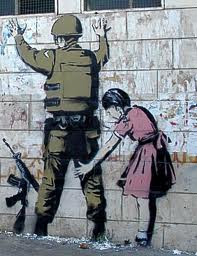Further to my recent post about the way Americans don’t talk much about art (here), either because they don’t know enough or they don’t care enough or both.
The other day, I was sent the galleys for the forthcoming book, Whiter Shades of Pale, by the author of Stuff White People Like, a 2008 best-selling book, and a website of the same name, Christian Lander. Lander wrote, in one part, about classical music:
There are a number of industries that survive solely upon white guilt: Penguin Classics, the SPCA, free range chicken farms, and the entire rubber bracelet market. Yet all of these pale in comparison to classical music, which has used white guilt to exist for over a century beyond its relevance.
Though white people do not actually listen to classical music, they like to believe that they are the type of people who would enjoy it. You can witness this first hand by going to any classical performance at your local symphony where you will see literally dozens of white couples who have paid upwards of $80 for the right to dress up and sit in a chair for hours reading every word in the program.
 Lander did not mention the visual arts, except in a section on the popularity of arts degrees, which could include “actual art.”
Lander did not mention the visual arts, except in a section on the popularity of arts degrees, which could include “actual art.”
I was eager to see if he took up the subject in the new book, which basically does the same thing broken down “regions” — e.g., Atlanta, “college towns throughout the United States,” Los Angeles, New York.
Nope. Not really. Lander has a few more observations about classical and other music, but the sole entry that refers to visual arts comes in the section on the United Kingdom and refers to Banksy.
Keeping up with art is hard; trips to galleries, enormous books, and costly biannual magazines are just a few of the many expenses you will incur during an attempt to stay current with art. While most of these things would actually attract more white people than dissuade them, the amount of work required to become and remain an expert on art is simply too much for the majority of white people.
…Currently the artist who is both cutting-edge and easy to keep up with is Banksy, and white people love him. He is anonymous, British, easy to understand, and he works in the medium of graffiti! This last part is very important since all white people consider graffiti to be art when it looks like something other than a bunch of squiggles. In every other instance, they consider it vandalism.
Not funny. Lander goes on to explain why your taste would be considered unsophisticated if you say your favorite artist is van Gogh, Escher or Monet, and why it looks like you’re trying too hard if you say Koons, Anderson (Laurie), Hirst or Basquiat. Banksy is “just right.”
Again, not so funny — and even discouraging that that may be what people think about people who know and care about art.
I’m not getting serious about this, though. It’s just one example.
